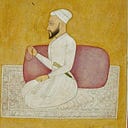I like maps, linguistics, and colors, so this post was inevitable. Some notes on the content below:
- The Indo-Aryan languages are grouped under the broader Indo-Iranian language family, and are descended from the first Indo-Aryan language to be propagated in India, Vedic Sanskrit. By the Middle Ages they had roughly coalesced into the groupings seen above.
- A tremendous amount of controversy has been generated with regards to how Indo-Aryan languages came to be in India. While experts now agree they were brought from the Eurasian-Steppe by the Indo-Aryans, many Hindu Nationalists continue to maintain that the languages (and the Indo-Aryans themselves) are indigenous to India, and were in fact spread to Iran and Europe by migrations out of India.
- The distribution of Indo-Aryan languages is a reflection of how ancient Indian history unfolded. The North-Western languages are largely dispersed over the area of the Indus Valley Civilization. The Central languages predominate in the Gangetic Plains, where the Indo-Aryans settled as agriculturalists and declared Aryavarta in the late Vedic Period. The Eastern languages cover regions where Buddhism and Jainism arose and took root, with a number of major empires originating in the area. The Southern languages predominate in what could be called, “South-India” (south of the Vindhya mountains), and share significantly with their Dravidian speaking neighbors.
- The Dardic languages aren’t really a proper language family, as the term is sort of a catch-all for isolated Indo-Aryan dialects in the North-Western mountain ranges. So some languages will be quite similar, while others much less so. Its hypothesized some Dardic isolates carry features of the earliest Indo-Aryan languages found in India.
- The Hindustani blob is a result of Hindi cannibalizing nearly all the related Central languages in the modern period. This is largely the result of a push by the Indian government to make Hindi the primary language of India, and while for most groups this simply means speaking it as a second-language (see Urdu in Pakistan), it has resulted in those neighboring languages already close to Hindi being entirely subsumed.
- The Pahari languages were kind of weird, as some sources placed them in the North-West group, and others in the Northern group. I placed them in the latter, but if I find something definitive that says otherwise, I have no issue making a change.
- As far as mutual ineligibility goes, it varies. A good way to think about it is that languages in different regional groupings are not mutually intelligible, while some within the same grouping are (but many aren’t).
That’s all for now! Below is a note on the methodology used:
- These regional groupings (North, West, East, etc) seem to be the most popular method for classing the Indo-Aryan languages, but there are other systems out there.
- Data was largely pulled from census results and previous South-Asian linguistic maps.
- A few non-contiguous islands of Hindi dominance in districts throughout India were colored with their local language. The reasoning being that I had envisioned this as a sort of ethno-linguistic map, and while an urban area in say Gujarat may return Hindi as the most popular language, they would still identify as Gujaratis (and likely speak the language). The exception being the Urdu-majority areas in Sindh, as they are actually comprised of native-speakers descended from Indian-Hindustani migrants.
- Some languages could probably be displayed with more granularity (like Nepali), but acquiring reliable info about certain sub-language groups was difficult.
